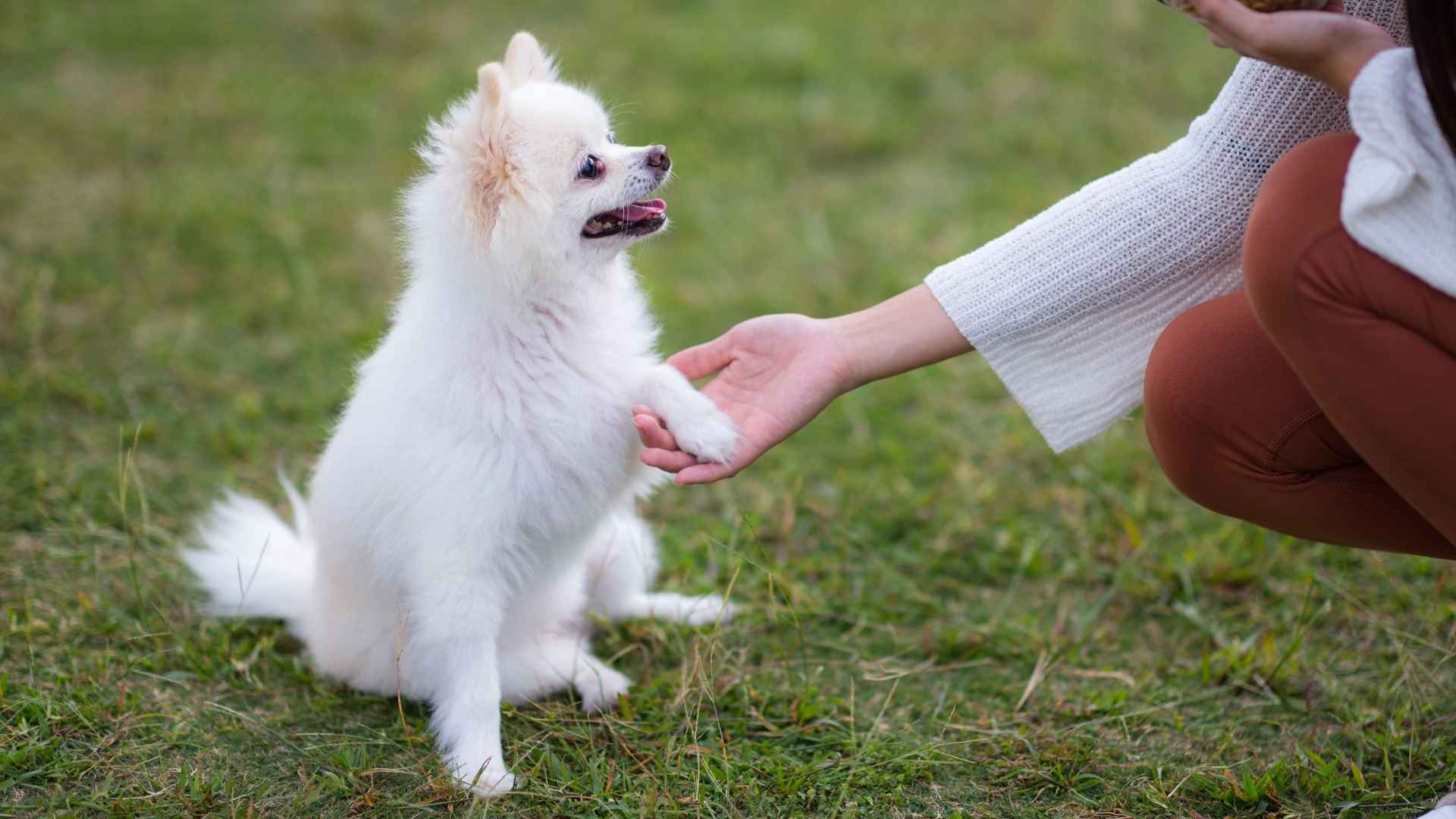Did you know that dogs are capable of understanding up to 165 words, signs, and signals? That’s right—our furry friends are not only great at fetching but can also solve puzzles, recognize patterns, and even anticipate our needs. When it comes to intelligent puppy breeds, these clever pups go beyond just being cute—they’re quick learners, eager to please, and always up for a challenge.
Whether you’re looking for a pup who can master tricks in record time or one who thrives in agility training, choosing a breed with a sharp mind can make all the difference. Intelligent puppies aren’t just easy to train; they’re also adaptable and curious and often have a unique ability to bond with their owners in a way that’s both rewarding and fun.
Ready to meet the brainiest of the bunch? Let’s dive into the world of smart dog breeds that are as smart as they are lovable!
Intelligent Puppy Dog Breeds
1. Labrador Retriever
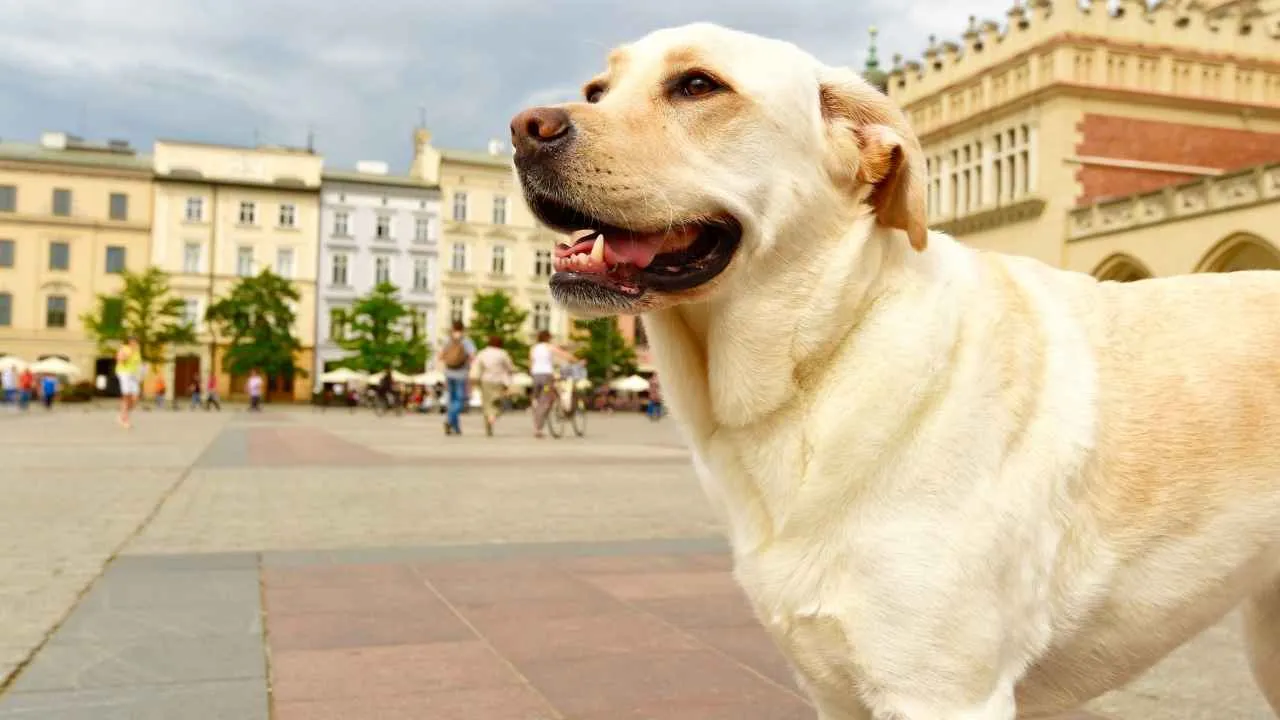
Labrador Retrievers top the charts as one of the most beloved breeds in the U.S., thanks to their affectionate temperament, boundless energy, and deep loyalty. Whether it’s swimming, hiking, or a game of fetch, Labs thrive in active households that match their enthusiasm.
Ranked 7th in intelligence by Dr. Stanley Coren, Labs are quick to pick up commands and routines. Their ability to observe and mimic makes them:
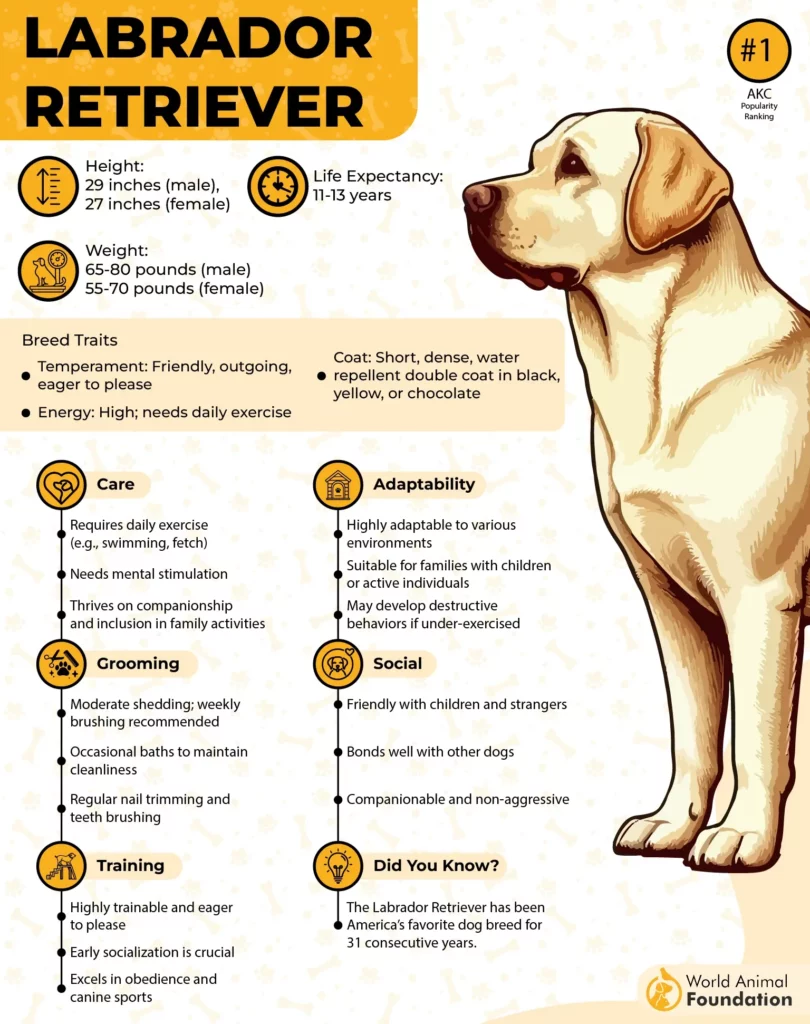
Highly trainable
Excellent service and therapy dogs
Reliable in search and rescue missions
Their strong desire to please makes training smooth, even for first-time dog owners.
Myth-Busting the Color Debate
Labs come in three standard coat colors—black, yellow, and chocolate—but don’t let color fool you. A 2019 study showed:
No link between coat color and aggression or hyperactivity
Chocolate Labs showed slightly lower trainability
Yellow Labs scored a bit higher in familiar dog aggression
The takeaway? Temperament is shaped by training and environment, not color.
Built for Comfort and Care
Labrador Retrievers shine in emotional support and therapeutic roles. With their:
Gentle demeanor
Attunement to human emotions
Steady behavior under stress
They’re a top choice for emotional support animals, helping individuals with disabilities or anxiety find consistent comfort.
2. Golden Retriever
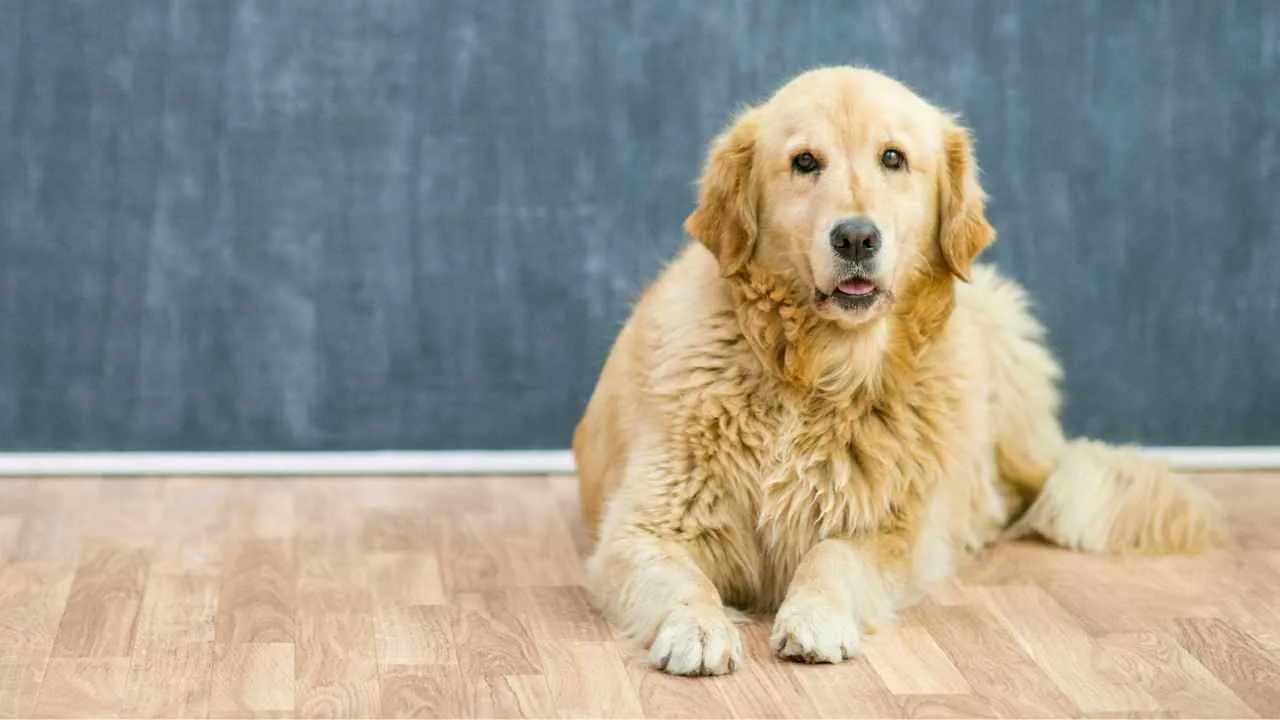
Originally bred in 19th-century Scotland by Dudley Marjoribanks at Guisachan House, the Golden Retriever was designed to retrieve game birds from water and rugged terrain. First shown in 1908, the breed quickly gained fame and was recognized by the American Kennel Club in 1925. Today, all Goldens trace their roots to that foundational Scottish litter.
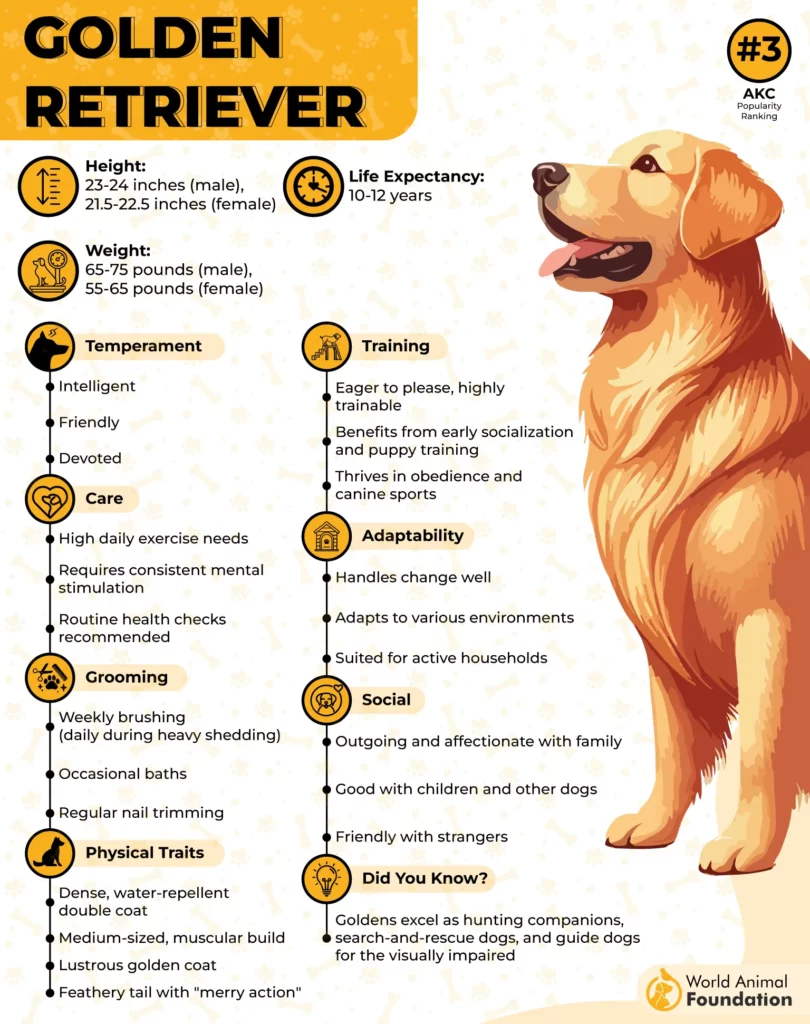
Golden Retrievers are beloved for their gentle, friendly, and eager-to-please temperament. Their sociable nature makes them ideal for families, especially those with kids or other pets. However, they dislike being left alone—too much solitude can lead to destructive behaviors.
Brainy and Eager to Learn
These dogs aren’t just lovable—they’re a highly intelligent breed. Known for mastering commands with ease, Goldens excel in:
As guide dogs and in therapy work
Search and rescue
Police assistance
Obedience competitions
Many can even recognize and respond to hundreds of words, showcasing remarkable cognitive skills.
Built to Play, Born to Swim
Golden Retrievers need daily exercise to burn off their high energy. They thrive on:

Fetch and running games
Outdoor adventures
Swimming—thanks to their water-resistant coat and webbed feet
Even as adults, their puppy-like playfulness sticks around, keeping things fun and lively at home.
Natural Healers
With their calm, empathetic demeanor, Goldens are widely used in emotional support and therapy settings. Whether visiting hospitals or comforting trauma victims, their presence offers unmatched emotional relief.
A Star-Studded Favorite
Goldens have long been a celebrity favorite. Notable fans include:
President Gerald Ford, whose Golden, named Liberty, became a White House icon
Oprah Winfrey, Leonardo DiCaprio, and Andrew “Freddie” Flintoff, all proud Golden owners
3. Shetland Sheepdog
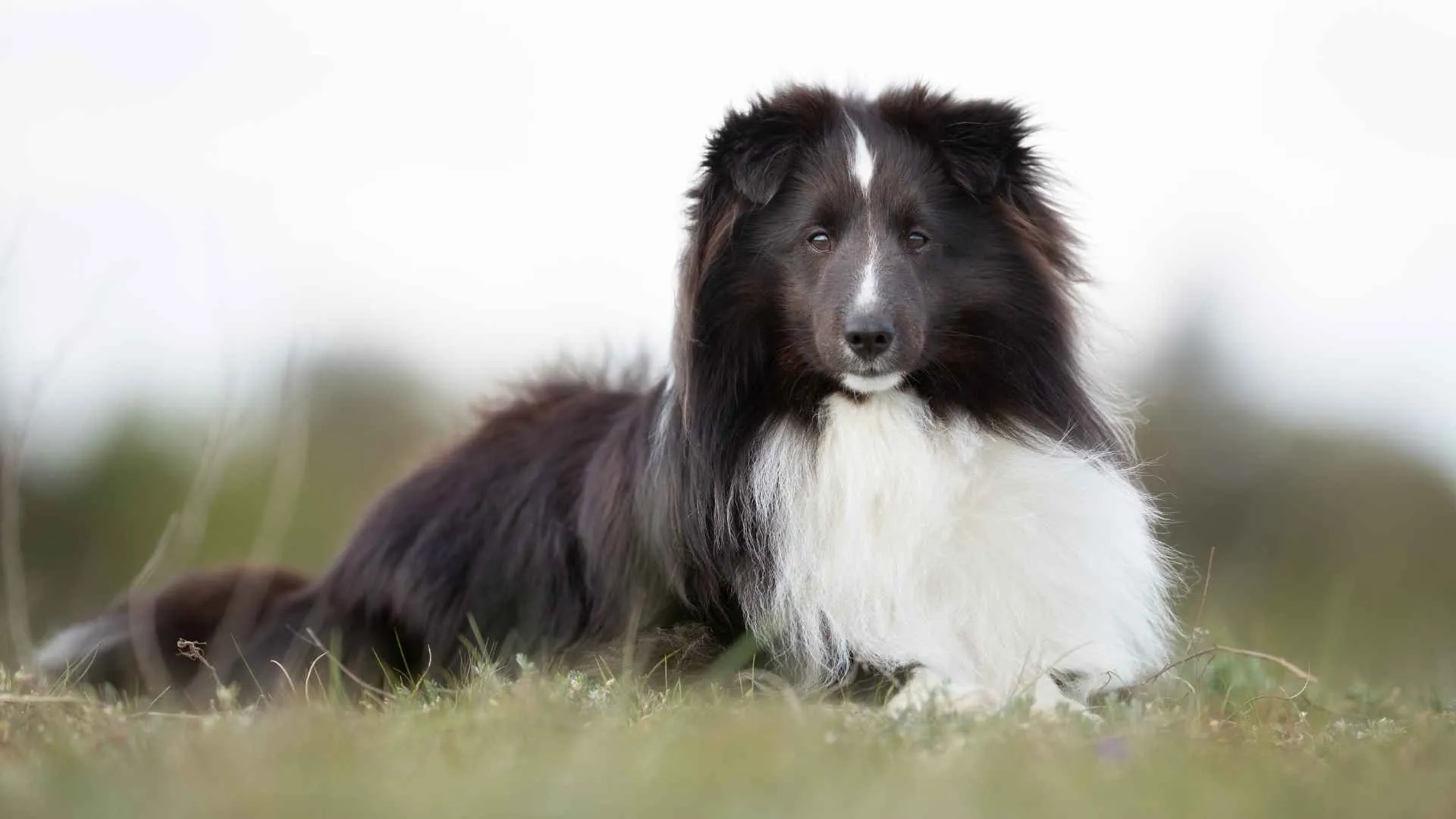
Standing just 13 to 16 inches tall, the Shetland Sheepdog—affectionately called the Sheltie—packs the instincts and energy of a full-sized herder into a compact frame. Their size makes them perfect for travel and small homes without sacrificing stamina or smarts.
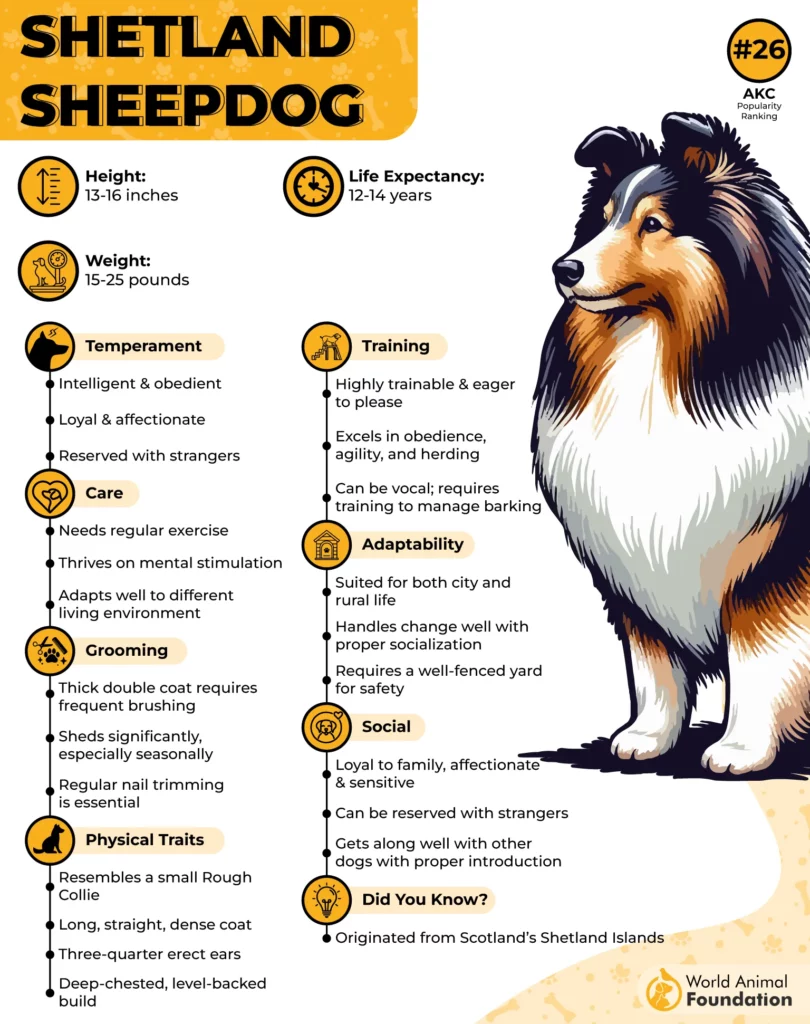
Elegance in Every Strand
WebMD states Shelties are closely related to the Rough Collie. They boast a flowing double coat, a refined long snout, and an alert expression. Coat colors include:
Sable
Blue merle
Black with white markings
Their beauty, matched with grace, makes them a favorite in both show rings and households.
Agile, Athletic, and Acclaimed
Don’t let their size fool you—Shelties are top performers in agility and herding trials. They consistently shine in competitions across the globe and continue to work as herding dogs on farms today. In the U.S., they’re a fan favorite, currently ranking 27th in AKC registrations.
Family-Focused and Friendly
Shelties are incredibly affectionate and thrive in family settings. They’re especially good with:
Children
Other pets
First-time dog owners
Their loyal, responsive temperament makes them one of the most beloved companions in the herding group.
Always on Alert
These dogs are naturally watchful and vocal, often barking to alert their humans of anything unusual. While this makes them great watchdogs, early, consistent training can help moderate excessive noise.
Brilliant and Eager to Please
Ranked 6th in intelligence by canine researcher Dr. Stanley Coren, Shelties are quick learners. They can:
Learn commands quickly
Obey on the first attempt 95% of the time
Excel with positive reinforcement training
4. Border Collie
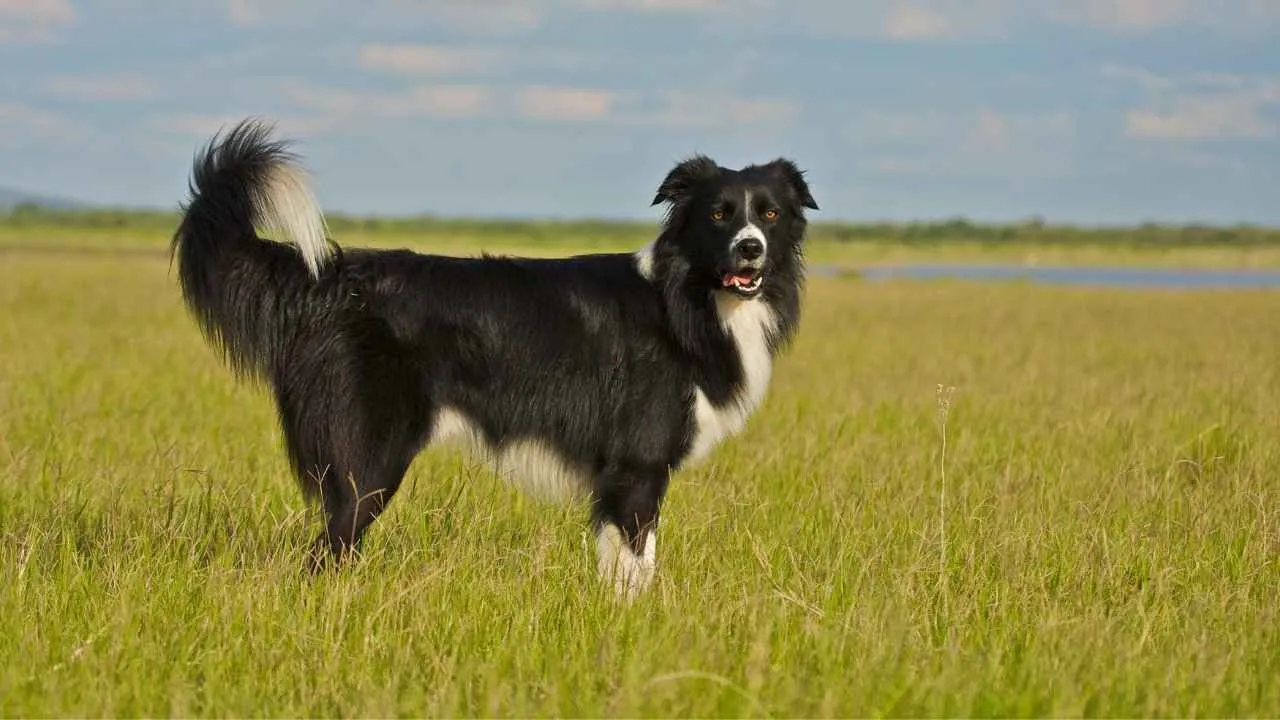
Border Collies are widely regarded as the most intelligent dog breed. As noted by AKC, Dr. Stanley Coren ranks them number one in canine smarts thanks to their lightning-fast ability to learn commands and perform various tasks.
Capable of mastering a new command in under five repetitions
Obey the first command 95% of the time
Excel in roles like search and rescue, sniffer dog work, and competitive obedience
They’re like the Einsteins of the dog park, constantly eager for a mental challenge.
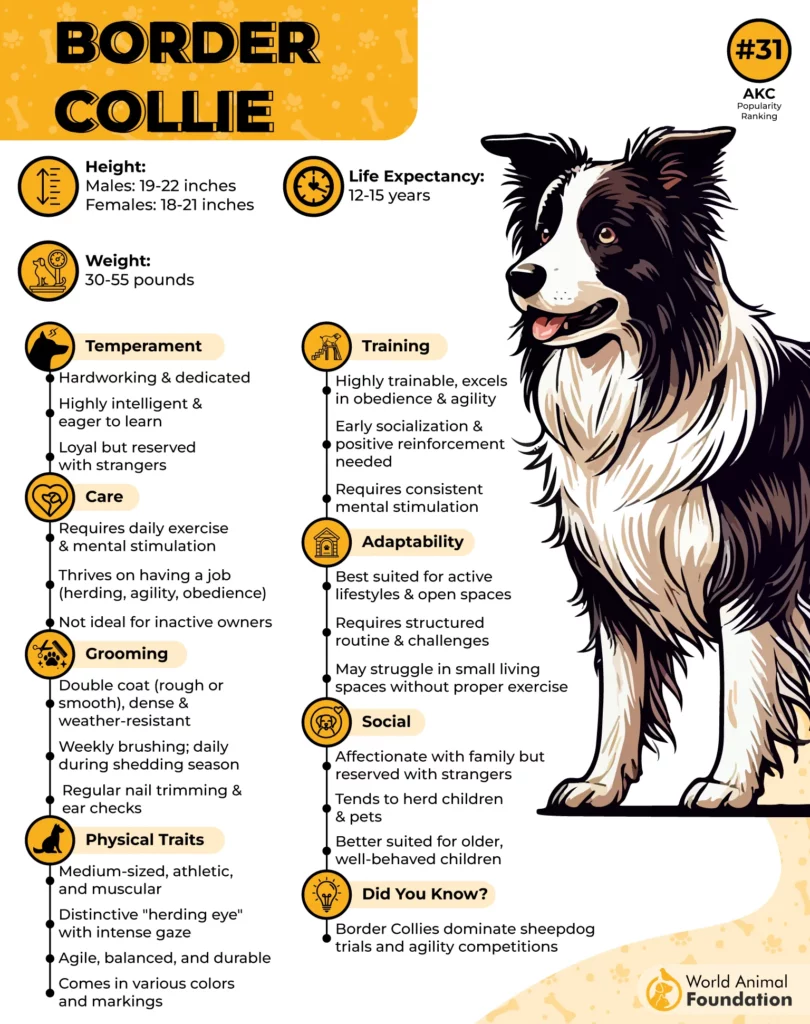
Born to Herd, Bred to Work
Originally developed to herd sheep, Border Collies retain a strong working drive that thrives on purpose. Even in domestic settings, they need physical and mental stimulation to stay content.
Love dog sports such as agility, treibball, and obedience
Enjoy working in sync with their humans as a team
Great candidates for both competitive and recreational canine sports
If they don’t have a job to do, they’ll invent one!
Fit for Royalty
Border Collies aren’t just canine champions—they have noble fans, too. Queen Victoria herself adored the breed and kept a beloved Collie named Sharp. He even made appearances in royal paintings!
5. Papillon
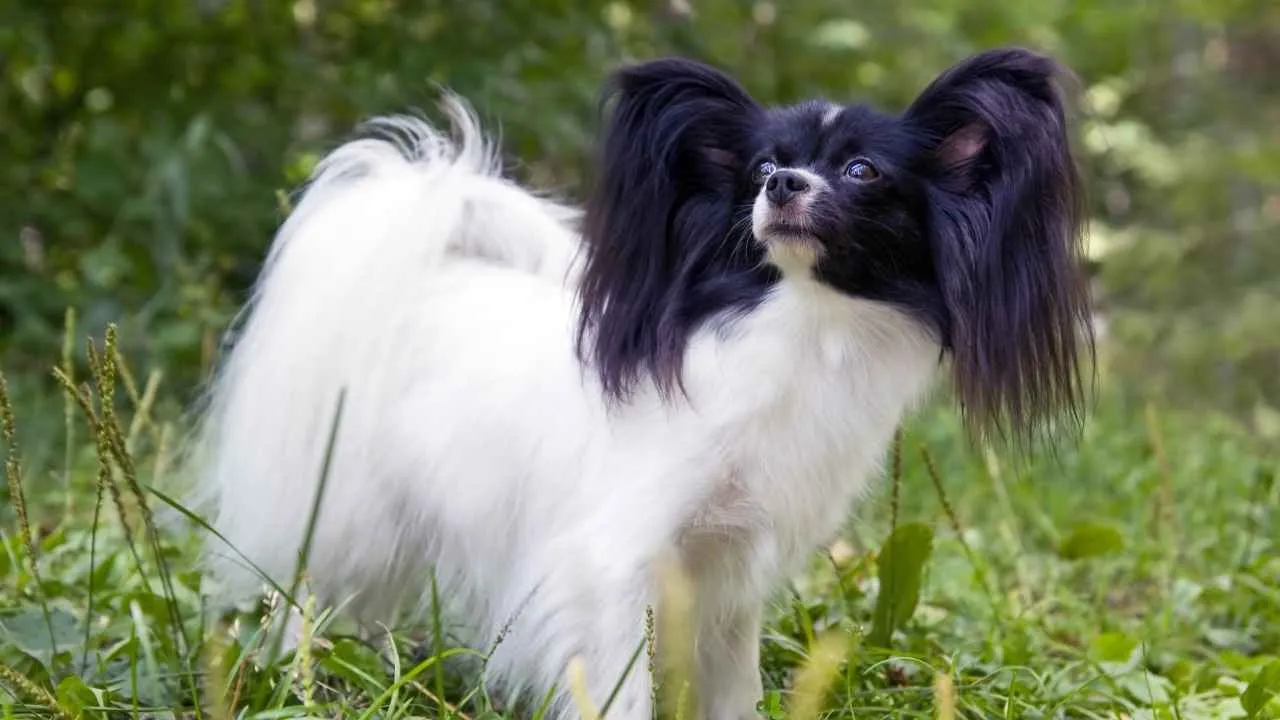
Elegant, lively, and a smart breed, the Papillon—named after the French word for butterfly—earned its title from its wing-like ears and graceful presence. As one of the oldest toy breeds, the Papillon was a favorite among European royalty, including Marie Antoinette and Louis XIV. Today, this small but mighty breed continues to dazzle with its charm, smarts, and show-stopping style.
Despite standing just 8–11 inches tall and weighing 5–10 pounds, the Papillon exudes elegance. Its silky, flowing coat, plumed tail, and butterfly-like ears make it a standout in any room or ring. Better yet, their grooming needs are modest, and their beauty often looks effortless.
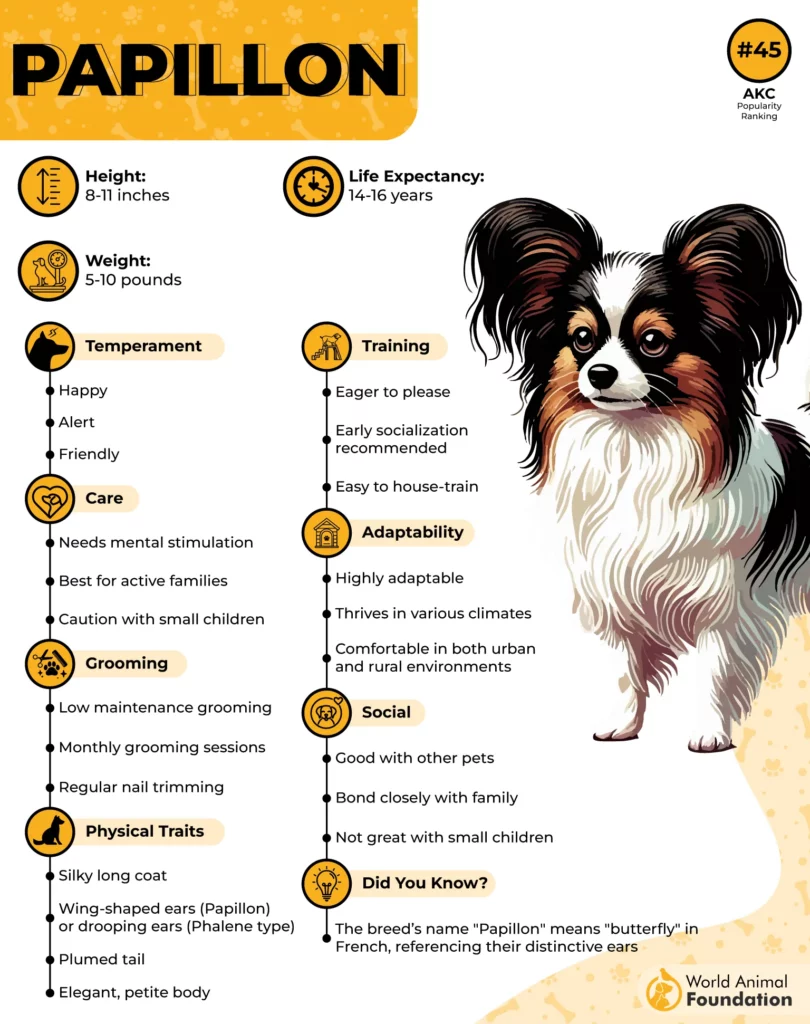
Brainy, Bold, and Eager to Impress
Papillons rank among the most intelligent toy breeds, with an uncanny ability to learn fast and perform with flair. They thrive on mental challenges and adore being the center of attention in training sessions.
Why they’re a trainer’s dream:
Learn commands quickly and enthusiastically
Excel in obedience and agility competitions
Respond well to positive reinforcement
Adapt easily to new tricks and routines
Surprisingly Sporty
Originally bred as lapdogs for royalty, Papillons are surprisingly agile and athletic. Whether dashing through an agility course or chasing a toy, they move with speed and precision.
More than just lapdogs:
Agile and energetic performers
Natural retrievers with playful instincts
Great at fetch, tracking, and canine sports
Excellent candidates for therapy work
Their versatility makes them suitable for both competition and cuddle time.
Butterfly or Moth? Meet the Phalene
Not all Papillons share the upright butterfly ears. Some have drop ears, a variation known as the Phalene—French for “moth.” Both versions are equally elegant, but AKC standards accept only fully erect or fully dropped ears—no in-betweens.
6. Doberman Pinscher
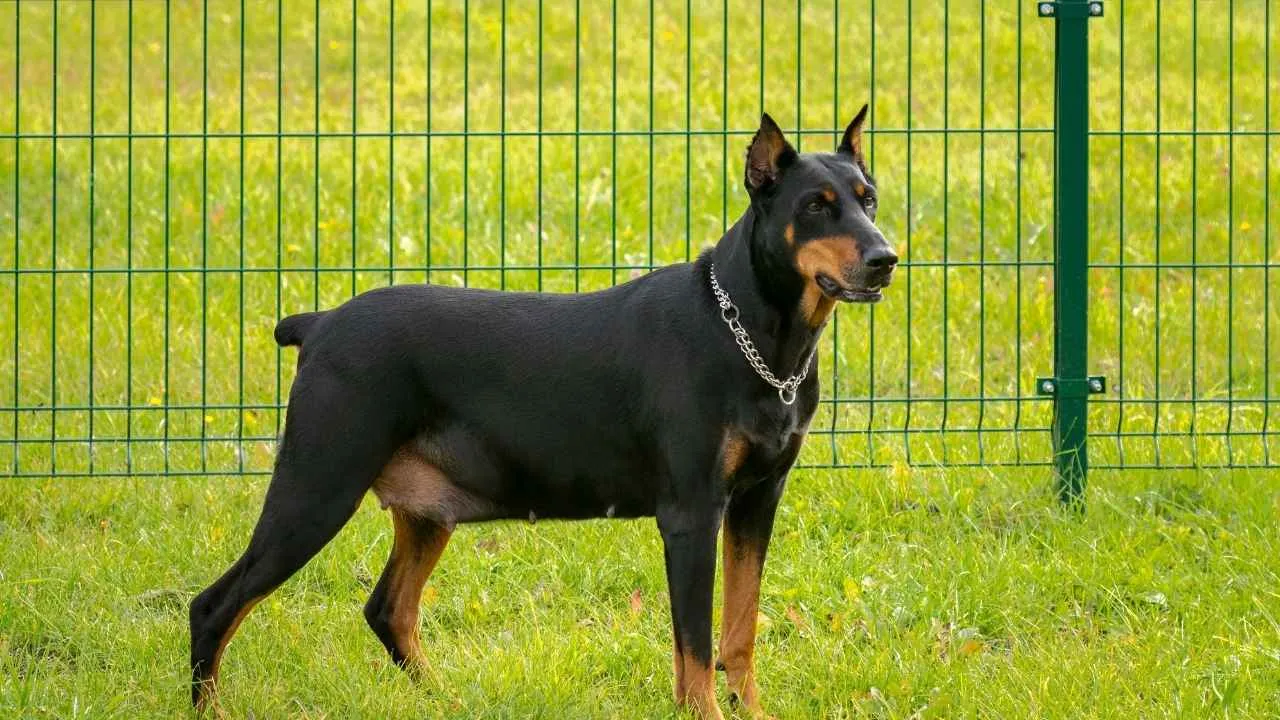
Though the Doberman Pinscher is a relatively young breed, having been developed by Karl Friedrich Louis Dobermann in the 1880s, it has quickly risen to fame as one of the most versatile and respected dogs. Known for its intelligence, loyalty, and protective instincts, the Doberman has evolved from a guard dog into a loving family companion without losing its noble, protective demeanor.
Striking Appearance: Sleek and Powerful
The Doberman is a muscular powerhouse, standing between 24 to 28 inches tall at the shoulder. With its sleek coat in shades of black, blue, red, or fawn and distinctive rust markings, this breed exudes nobility and grace. Its athletic build and regal expression make it a standout in any setting, embodying both strength and elegance.
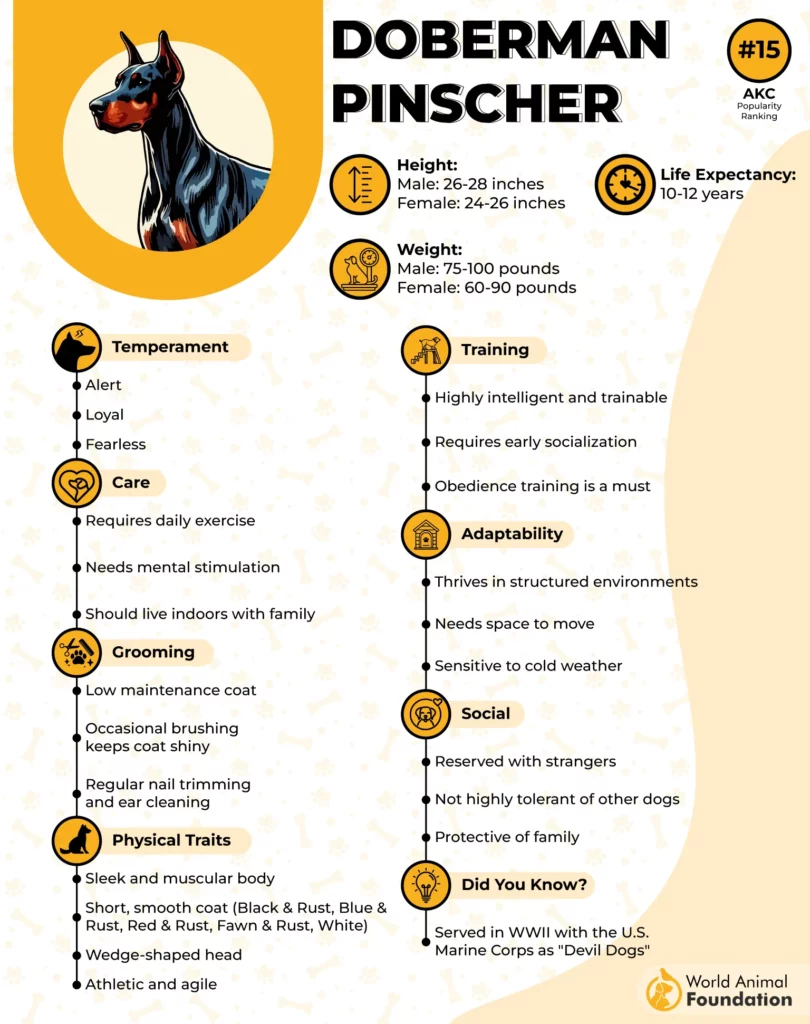
A Sharp Mind: Intelligence and Adaptability
Ranked among the top ten smartest dog breeds, Dobermans are prized for their quick learning ability and thrive on challenges. Britannica states they excel in a variety of roles, from service work to competitive sports, thanks to their sharp intellect and adaptability.
Highly trainable and eager to learn
Thrive in obedience and agility trials
Ideal for service roles like therapy and guiding the blind
Known for loyalty and quick responses to complex commands
Family Guardians: Temperament and Traits
Fiercely loyal and protective, Dobermans are natural family guardians. While they can be aloof with strangers and assertive with other dogs, they are incredibly affectionate with their families, especially with those they bond closely with. Their intelligence, sensitivity, and energy make them well-suited for active homes.
7. Australian Cattle Dog
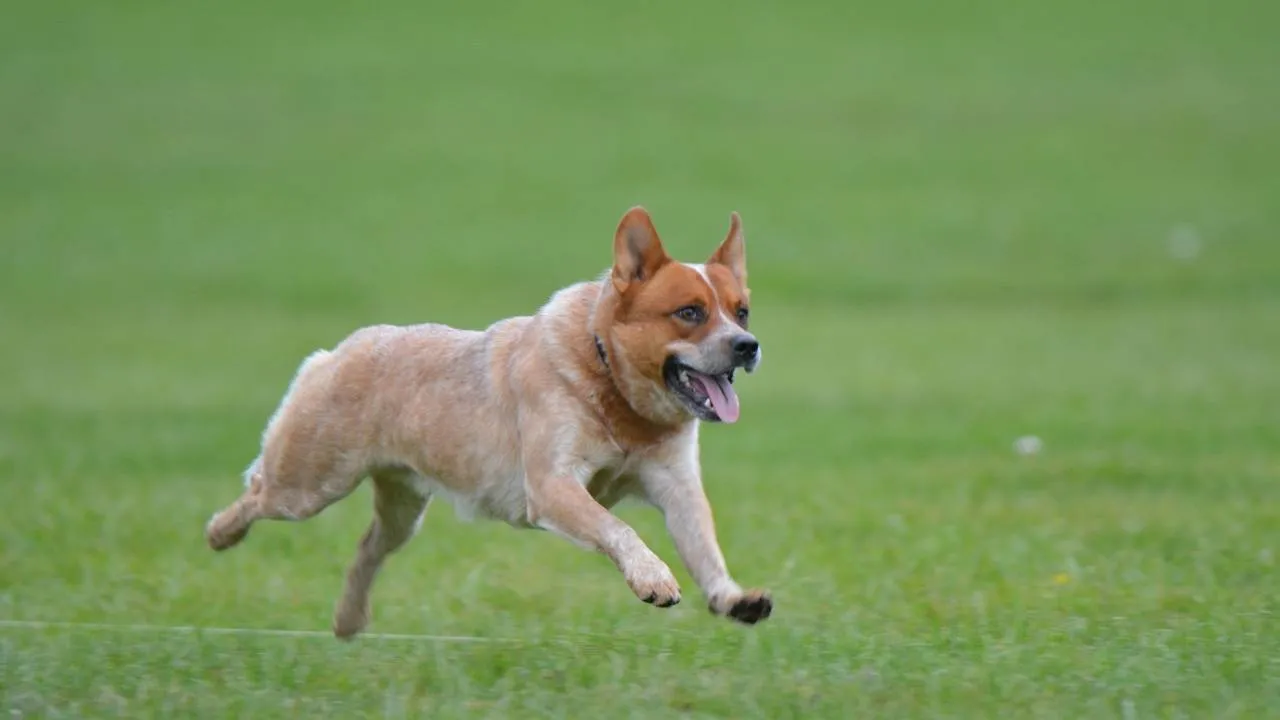
Bred in the heart of the Australian Outback, the Australian Cattle Dog (ACD)—also known as the Blue Heeler or Red Heeler—is a rugged herder with dingo roots and boundless energy. Designed to drive cattle across scorching, wild terrain, this compact powerhouse is sharp, spirited, and tireless.
Standing 17–20 inches tall and weighing 35–50 pounds, the ACD is muscular, agile, and built for endurance. Pups are born white but soon develop vibrant red or blue-speckled coats—a nod to their Dalmatian lineage.
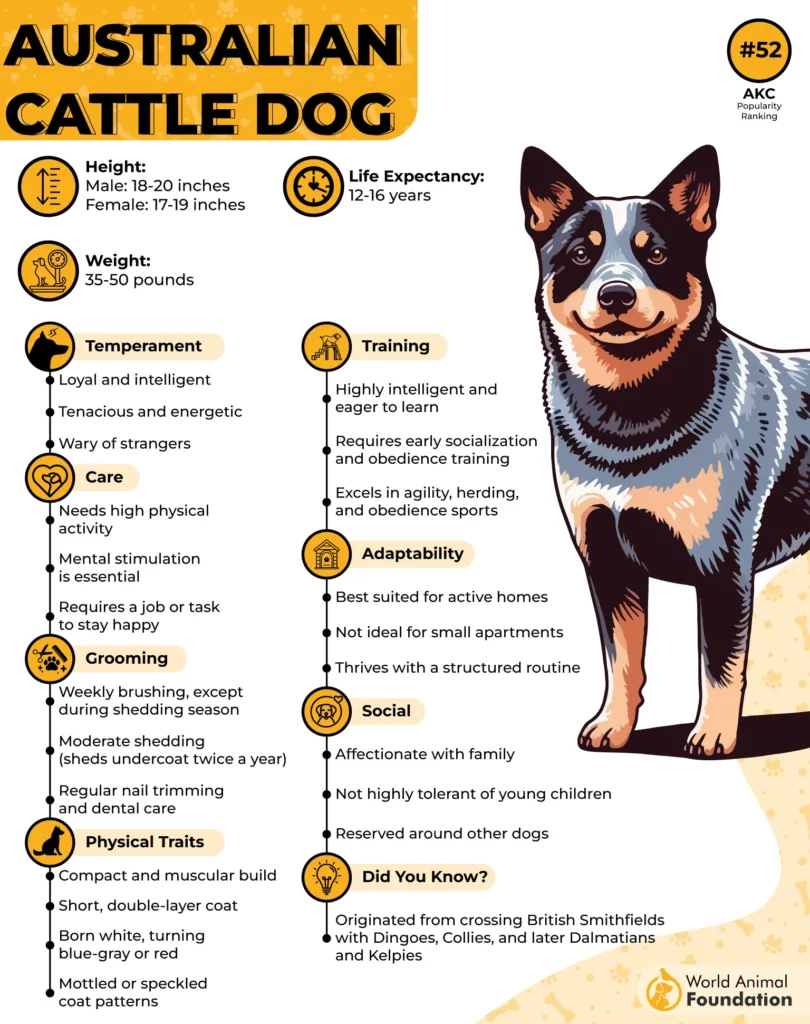
Australian Cattle Dogs didn’t get the nickname “heelers” by accident—it’s a nod to their clever way of herding cattle by nipping at their heels. Renowned for their grit and intelligence, these dogs were stars of the cattle industry, expertly guiding herds across vast grazing lands.
And don’t be surprised if that herding instinct follows them into your living room—just like their spunky mix, the Cowboy Corgi, they’re known to give a gentle nip at your ankles when they’re eager to lead the way.
A Clever Canine Legacy:
Renowned for intelligence, ACDs are quick learners. One named Skidboot wowed the world with his tricks. These dogs don’t just follow commands—they anticipate them.
Originally bred from dingos, Collies, Kelpies, and Dalmatians, the ACD’s tough ancestry shines through in its work ethic. They’ll herd livestock—or your kids—if not properly trained. Early socialization is key.
Conclusion
Intelligent dog breeds like the German Shepherd and Miniature Schnauzer stand out for their high intelligence and ability to quickly learn new tasks, making them ideal for roles such as police dogs or beloved family pets. These energetic dogs thrive with proper training, especially when challenged with puzzle toys and obedience training.
Breeds like Standard Poodles, with their keen sense and adaptability, excel in solving problems and can even work independently. Whether you’re an active family or looking for a highly perceptive companion, many breeds, from curly-coated cuties to working dogs, offer the intelligence and loyalty needed to excel in various environments.
The key to unlocking their full potential lies in offering them the proper training and mental stimulation they deserve.


